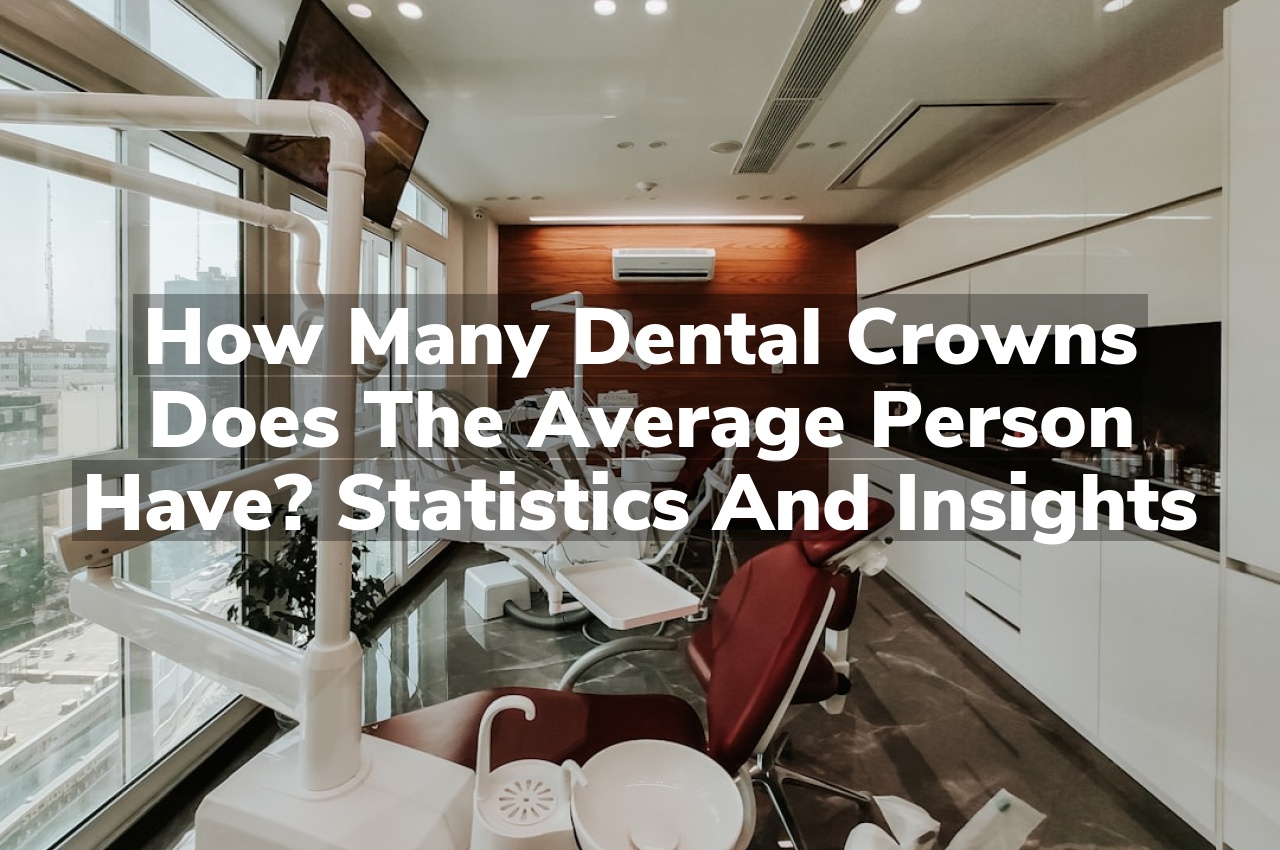What are dental crowns used for? Versatile solutions for various dental issues are often sought by the average person looking to maintain or restore their oral health. Dental crowns are custom-fitted caps placed over teeth to protect, cover, and restore the shape of your teeth when fillings don’t solve the problem. They are commonly used to address damaged teeth, enhance cosmetic appearance, and ensure overall dental functionality.
How many Dental Crowns Does an Average Person have: Typical Lifespan of Dental Crowns
Dental crowns are a common solution for various dental issues, serving as a cap for damaged or decayed teeth. The lifespan of dental crowns can vary significantly based on the material used and the care they receive. Generally, with proper maintenance, dental crowns can last anywhere from 5 to 15 years before needing replacement. For more detailed information on their applications, you might want to read about What Are Dental Crowns Used For? Versatile Solutions for Various Dental Issues.
The durability and longevity of dental crowns also depend on factors such as the wear and tear they undergo and how well they are fitted. Regular dental check-ups are crucial as they help ensure that the crowns are still in good condition and properly serving their purpose. Understanding these aspects can help gauge how many dental crowns the average person might have over their lifetime, reflecting the typical need for eventual replacement or adjustment.
Impact of Material on Durability
The longevity and performance of dental crowns, which significantly influence how many dental crowns the average person might have over their lifetime, are heavily dependent on the materials used in their construction. Common materials include porcelain, ceramic, gold, and metal alloys, each offering different benefits in terms of durability, aesthetics, and cost. Porcelain and ceramic crowns are popular for their natural appearance, making them ideal for front teeth restorations, whereas gold and metal alloys are prized for their strength and durability, often used in molars that require more resilience against chewing forces.
Understanding the impact of these materials on the durability of dental crowns can help individuals gauge the longevity of their dental work. Crowns made from high-quality, durable materials may not need to be replaced as frequently, potentially reducing the number of crowns a person might need throughout their life. For those interested in exploring options for durable dental crowns, visiting Meridian’s Leading Dental Crown Specialists could provide valuable insights into the choices available.
Signs of Crown Loosening or Shift
When considering how many dental crowns the average person has, it’s important to be aware of the potential issues that can arise with these dental appliances. One common issue is the loosening or shifting of a crown. This can occur over time due to a variety of factors including natural wear and tear. Recognizing the signs of such changes is crucial for maintaining oral health. Signs that a dental crown may be loosening or shifting include noticeable movement of the crown, a change in bite alignment, or an unusual sensation when chewing or biting.
Symptoms of Underlying Decay
When considering how many dental crowns the average person has, it’s important to understand the symptoms that might lead someone to need one. Underlying decay can manifest as persistent toothache, sensitivity to hot and cold, or even visible holes or pits in the teeth. These symptoms suggest that the tooth enamel has been compromised, potentially necessitating a dental crown to restore the tooth’s structure and function.
For those in need of dental care, Alliance Dental Care is known for its expertise. Learn more about your options from a trusted Meridian Dentist.
Crown Cracking or Chipping Indicators
When discussing the durability of dental crowns, it’s important to consider common issues such as crown cracking or chipping. These indicators can occur due to a variety of reasons, including natural wear and tear over time. Recognizing the signs of such damage is crucial for maintaining oral health. Generally, visible cracks or chips in a crown, or feeling a rough edge with the tongue, might suggest that the integrity of the crown has been compromised. This is a common occurrence and reflects the stresses that dental restorations are subjected to during everyday activities like eating and chewing.
Gum Health and Crown Stability
Maintaining optimal gum health is crucial for the stability of dental crowns. The average person with dental crowns must ensure that their gums are healthy to support the longevity and effectiveness of their crowns. Inflamed or receding gums can compromise the crown’s stability, potentially leading to a need for replacement or adjustment. Regular dental check-ups, proper hygiene practices, and addressing any gum issues early are essential steps to maximize the lifespan of dental crowns. Understanding how many dental crowns the average person has can also provide insights into the typical challenges and maintenance requirements associated with this common dental procedure.
Regular Check-Ups and Crown Assessment
Regular dental check-ups are crucial for maintaining overall oral health and are particularly important for assessing the condition of dental crowns. During these visits, dentists evaluate the integrity and fit of existing crowns to ensure they continue to function properly and protect the underlying tooth. Statistics show that the number of dental crowns the average person has can vary widely, depending primarily on individual dental history and the preventative care received over their lifetime. Regular assessments can help detect any issues early, potentially reducing the need for additional crowns and ensuring that each crown lasts as long as possible.
Effects of Bite and Alignment
The condition of a person’s bite and the alignment of their teeth can significantly influence the number of dental crowns an average person may require over their lifetime. Misaligned teeth or an improper bite can lead to uneven wear and tear, which often necessitates restorative procedures like crowns to protect and stabilize the affected teeth. Understanding how many dental crowns the average person has can help dentists and patients anticipate future dental needs and address bite-related issues early on. Proper alignment not only contributes to a healthier mouth but also reduces the likelihood of needing multiple crowns, thereby maintaining more of the natural tooth structure.
When to Consult Your Dentist
If you’re wondering how many dental crowns the average person has, it’s essential to consult your dentist to understand your specific needs. Dental crowns are commonly used to restore damaged teeth, enhance aesthetic appearance, and improve overall oral health. Your dentist can provide a personalized assessment and determine if a dental crown is the right option for you. Regular check-ups are crucial for maintaining dental health and addressing any issues early on. By discussing your concerns and symptoms with your dentist, you can get a clearer picture of whether dental crowths are necessary for your situation.
Conclusion
Understanding how many dental crowns the average person has can be intriguing. For further inquiries, call us at 208-646-9461 or read our reviews on Google Maps.




